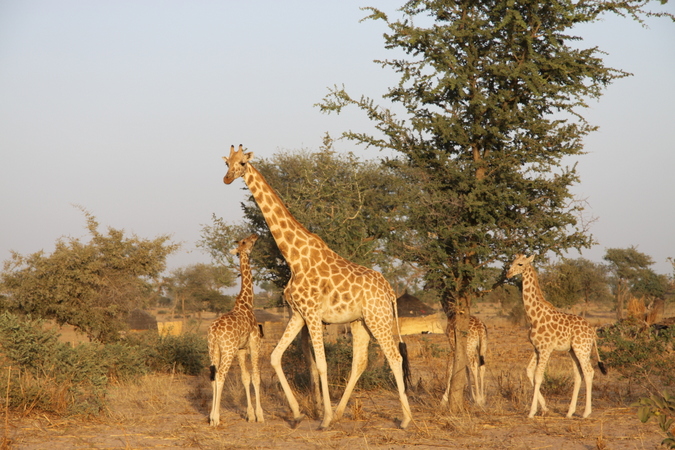
Press release from Giraffe Conservation Foundation (GCF)
The International Union for Conservation of Nature (IUCN) Red List of Threatened Species is once again drawing attention to the plight of giraffe. The IUCN Red List reveals that they are in serious trouble, with some now being considered as ‘Critically Endangered’. Many people first became aware of the declining numbers of the iconic giraffe when they were uplisted to ‘Vulnerable’ on the IUCN Red List in 2016. Today’s IUCN update comes as a further reminder that some of the currently IUCN-recognised giraffe subspecies are in real trouble.
The conservation status of seven of the currently IUCN-recognised nine giraffe subspecies has been assessed – five of these subspecies for the first time ever. For many, it comes as a shock that three of the giraffe subspecies are now listed as ‘Critically Endangered’ (Kordofan and Nubian giraffe) and ‘Endangered’ (Reticulated giraffe), while others range from ‘Vulnerable’ (Thornicroft’s and West African giraffe) to ‘Near Threatened’ (Rothschild’s giraffe). Only Angolan giraffe – with their stronghold in Botswana, Namibia and Zimbabwe – seem to be out of trouble and are listed as ‘Least Concern’. Only the South African and Masai giraffe are yet to be assessed. While South African giraffe appear to be doing well, Masai giraffe have plummeted and will most likely be placed within one of the threatened categories of the IUCN Red List.
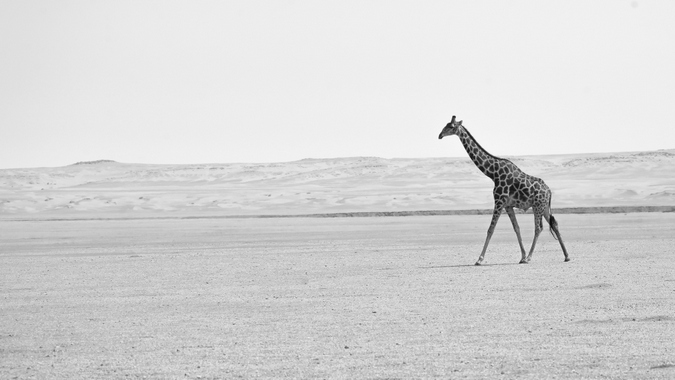
The updated assessments of these giraffe subspecies were undertaken by the IUCN Species Survival Commission (SSC) Giraffe & Okapi Specialist Group (GOSG), which is hosted by the Giraffe Conservation Foundation (GCF), and the Zoological Society of London (ZSL) – who already, two years ago, sounded the alarm for the ‘silent extinction’ of giraffe.
“Whilst giraffe are commonly seen on safari, in the media, and in zoos, people – including conservationists – are unaware that these majestic animals are undergoing a silent extinction. While giraffe populations in southern Africa are doing just fine, the world’s tallest animal is under severe pressure in some of its core ranges across East, Central and West Africa. It may come as a shock that three of the currently recognised nine subspecies are now considered ‘Critically Endangered’ or ‘Endangered’, but we have been sounding the alarm for a few years now.” – says Dr Julian Fennessy, co-chair of the IUCN SSC GOSG, and Director of the Giraffe Conservation Foundation (GCF).
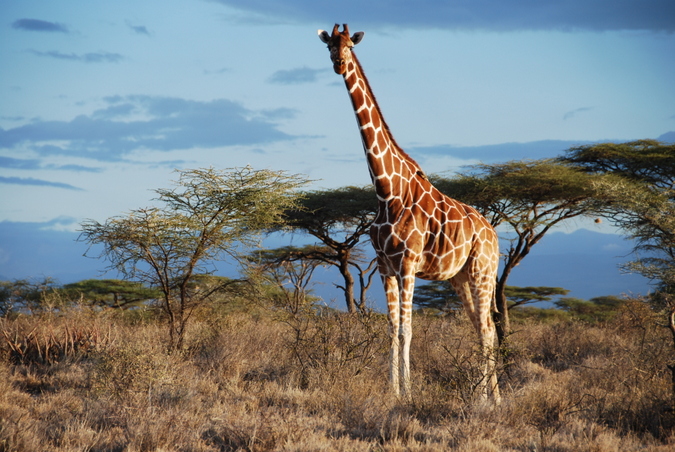
In spite of this, there is also positive news in this latest IUCN announcement. Two subspecies that were previously considered ‘Endangered’ (West African and Rothschild’s giraffe) have since improved their conservation status. Concerted efforts by African governments and conservation organisations, under the guidance and support of GCF, have resulted in increasing numbers of both subspecies, and as a result have been downlisted to ‘Vulnerable’ and ‘Near Threatened’, respectively.
“This is a conservation success story and highlights the value of making proactive giraffe conservation and management efforts in critical populations across the continent. Working collaboratively with governments and other partners, we feel that our proactive measures are saving giraffe in some areas before it is too late. It is now timely to increase our efforts, especially for those listed as ‘Critically Endangered’ and ‘Endangered’.” – says Arthur Muneza, East-Africa Coordinator of the Giraffe Conservation Foundation, and member of the IUCN SSC GOSG.
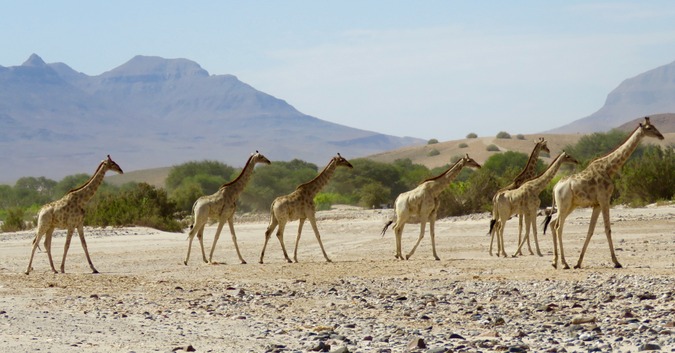
While IUCN still recognises giraffe as one species with nine subspecies, detailed collaborative genetic-based research carried out by GCF and its partners, and Senckenberg BiK highlights that there are four distinct species of giraffe – elevating some of the newly assessed subspecies to species level. While this might appear an academic exercise, the conservation implications are immense and they need to be reviewed as a matter of urgency. The Northern giraffe (Giraffa camelopardalis) – which includes the ‘Critically Endangered’ Kordofan and Nubian giraffe, and the ‘Vulnerable’ West African giraffe – and Reticulated giraffe (Giraffa reticulata) can be considered some of the most threatened large mammals in the wild, showing less than 5,200 and 15,785 individuals remaining in the wild, respectively.
| Common name | Previous Red List status | Updated Red List status |
| Kordofan giraffe | Not assessed | Critically Endangered |
| Nubian giraffe | Not assessed | Critically Endangered |
| Reticulated giraffe | Not assessed | Endangered |
| Thornicroft’s giraffe | Not assessed | Vulnerable |
| West African giraffe | Endangered (2008) | Vulnerable |
| Rothschild’s giraffe | Endangered (2010) | Near Threatened |
| Angolan giraffe | Not assessed | Least Concern |
| Masai giraffe | Not assessed | Not assessed |
| South African giraffe | Not assessed | Not assessed |
Human population growth poses the largest threat to giraffe in Africa today. Habitat loss and changes through expanding agriculture and mining, illegal hunting, increasing human-wildlife conflict, and civil unrest are all factors that are pushing giraffe towards extinction. However, with GCF giraffe have a strong advocate.
Steph Fennessy, Director of GCF and member of the IUCN SSC GOSG, points out that “the updated IUCN Red List assessment highlights what we have been saying for years: giraffe are in trouble and there is no one solution to giraffe conservation in Africa. Different scenarios require different approaches. As a small but impactful organisation, GCF works with partners throughout Africa to enhance giraffe conservation on the ground and, at the same time, collaborates internationally to rally support and awareness for giraffe, which will ultimately help to save them in the wild.”
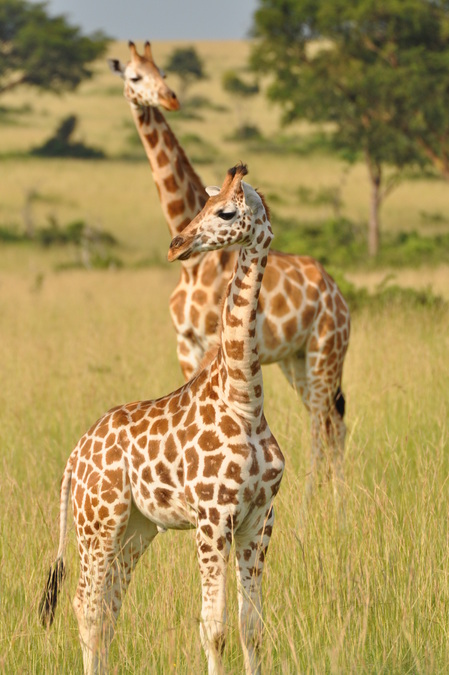
ABOUT THE GIRAFFE CONSERVATION FOUNDATION (GCF)
The Giraffe Conservation Foundation (GCF) is the only organisation in the world that concentrates solely on the conservation and management of giraffe in the wild, throughout Africa. Currently working in twelve African countries, GCF is dedicated to a sustainable future for all giraffe populations in the wild, and seeks to provide a range of appropriate technical and financial support to partners, including several African governments, to help save giraffe before it is too late. For more information, visit our website: https://giraffeconservation.org/
To comment on this story: Login (or sign up) to our app here - it's a troll-free safe place 🙂.![]()






